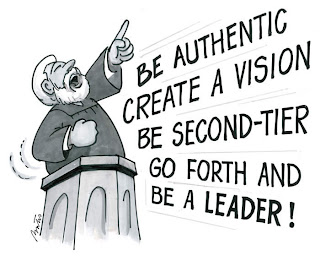It's wasn't a huge thing. But operational excellence means non-stop learning and I always find these things fascinating for the lessons they provide.
I've already described what happened - with some thoughts. Here's the follow-up.
When I posted to my blog it got posted to Twitter. The Twitter post caught the attention of @timhortonsus - a Twitter account whose profile is described as 'Tim Hortons USA PR'.
They responded with this reply:
@jimcrocker We apologize for your experience at one of the Canadian stores. We are available for further follow up.
I was impressed. And confused.
First impressed. It was Sunday. And someone at Tim Hortons was on the ball enough to both be following Twitter for mentions of their brand - outstanding, good for them - and actually got back to me. That is very cool. When companies think about how Twitter might be used THIS IS EXACTLY ONE OF THE WAYS.
Now. Confused.
I'm in Canada. And I'm getting a response from the US Tim Horton's operation - maybe even their PR people. Why them? Do they speak for Canada? Are they the Tim Horton's Twitter monitoring service dudes for North America?
It's not clear. The very direct reference to 'at one of our Canadian stores' can easily be read as 'that stuff you're blogging about didn't happen here in the US'. Yet, there is lots of Canadian content that suggests this is Tim Hortons official North American Twitter account.
For a second or two I wondered if Tim Horton's really had it's act together. Would the US 'PR' guys tip someone in Canada to take a look at Twitter and may I'd hear from someone closer to home. I wasn't expecting it and it never happened. Further, I had already replied, saying I was cool, so why would they?
Are there lessons here? If there are, they're simple (is there anything new here?):
1. People are talking about brands on-line all the time. Tuning into Twitter and other social networking services is a good, timely way to keep abreast of - and respond to - what's being said.
2. I got reminded, that whatever the service, having a an appropriate user name and descriptive profile can be helpful. I'm assuming @timhortonsus, the "USA PR" people are exactly that - so being a little confused about why they're responding to a Canadian issue is ok - however, if that's what they do, then their user name may be inappropriate and indicating their broader role in their user profile would be clearer and more helpful.
3. Services like Twitter are about interacting, not just messaging. I checked to see if Tim Hortons Canada has a Twitter account and they appear to - @timhortonsnews. It has the look and feel of a corporate experiment - no user profile; few posts; all outbound marketing messages, eg "exclusive Sydney Crosby merchandise...". However, they do point to their Facebook page which includes customer discussions on good and bad service.
4. Finally, I also got reminded that great service is about overachieving customer expectations - and that generally expectations are pretty low. I wasn't sure what to expect when I originally posted to my blog. Getting a response seemed very professional but it was still within my 'possibility' range. Linking me from the US to Canadian operations would have blown me away.
5. There are other lessons here that need some thought:
- the challenge of cross-border brands and who has responsibility given there are no borders on the internet?
- the challenge of actually 'listening to customers' and figuring what to do with it - the Tim Horton's Facebook page is a mish-mash of customer rants. What does a company do with that noise (here's a suggestion: post store surveys on-line).
Bottom line I remain a big Tim Horton's fan. Being ubiquitous and busy, they provide a fascinating fish bowl operation for observing and learning about operating well - and better. How their on-line presence is managed and evolves will be just as fascinating.


No comments:
Post a Comment